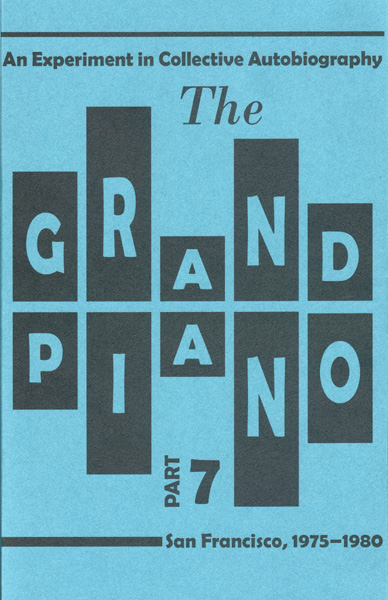Here’s a little thought experiment. Place the following three poets into chronological order –
A) John Ashbery
B) Clark Coolidge
C) Basil Bunting
Most readers I dare say will select the sequence C, A, B – not only replicating the order in which these poets were born, but also that of the emergence of the literary movements with which they are associated: the Objectivist Bunting (tho you may have a harder time explaining why he should be so labeled), first generation New York School icon Ashbery or Clark Coolidge, who has been associated at times with both the 2nd generation New York School and with language writing. And who am I to say that anyone is wrong here?
So let me add a little more detail to my thought experiment and run it again:
A) John Ashbery’s River and Mountains
B) Clark Coolidge’s Flag Flutter & U.S. Electric
C) Basil Bunting’s Briggflatts
By now even the sleepiest reader must realize that there is some trick afoot. Let me add a few other titles: The Diaries of Anaïs Nin, Sylvia Plath’s Ariel, Jack Spicer’s Book of Magazine Verse, George Oppen’s Discrete Series, Gertrude Stein’s The Making of Americans, Louis Zukofsky’s All: The Collected Short Poems, 1956-1964.
All of these works were published in a single year, 1966, although both the Oppen & Stein were reprints of long unavailable editions.
This is a detail I pulled out of the bibliography that’s in the back of The Grand Piano, Part 7, the most recent volume in this collective interrogation into the history of the poetry scene of
Going through the list again Wednesday night, trying to distract myself from a too long flight from LA to
All of this is thoroughly imaginary, even if I fancy it as some sort of history of contemporary poetry – and I’m perfectly capable of arguing for my sense of it in reasonably strong terms, downgrading the likes of Robert Lowell, for example, or elevating (as a few correspondents tell me I have done without justification) Elizabeth Bishop from some margin of trivia. What is not imaginary, however, is the actual history of publication of any of these works. George Oppen published Discrete Series some 32 years before in an edition of maybe 300 copies. But in 1966 he was publishing for the first time in a generation and his terrific first books from San Francisco Review / New Directions had generated interest in the even earlier pre-communist poetry of the 1930s, so Ron Caplan of the Asphodel Bookshop in Cleveland brought out this reprint. Likewise Dick Higgins (one of the most underappreciated poets & publishers of the entire period) brought out Stein’s early opus, a big brick of a book at a time when all you could get of The Cantos, say, was an edition of the first 90.






